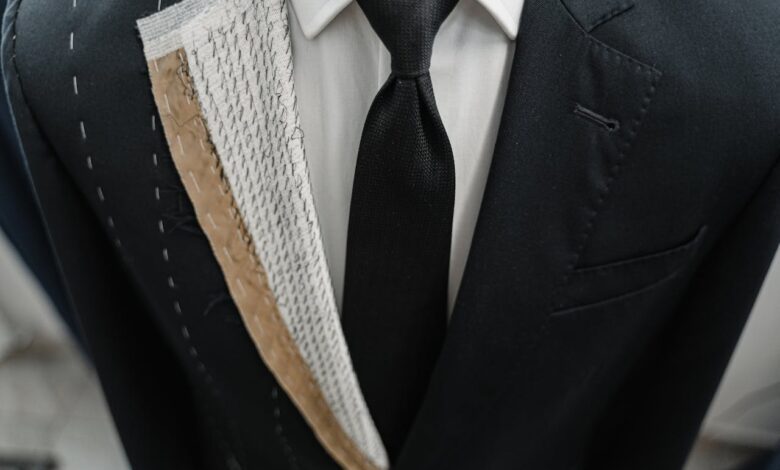Stitch Clothing: Crafting Unique Fashion Experiences

Stitch clothing has emerged as a popular choice for those who value creativity, individuality, and craftsmanship in their wardrobe. From custom designs to sustainable materials, stitch clothing encompasses a wide range of styles and trends that appeal to diverse audiences. In this article, we will explore the origins, benefits, types, and future of stitch clothing, offering insights into how it is transforming the fashion landscape.
The Origins of Stitch Clothing
Historical Background
Stitch clothing has its roots in traditional craftsmanship, where skilled artisans would create garments by hand. This practice can be traced back centuries, with various cultures around the world developing their own unique techniques. In many cases, stitching was not merely a functional task but an art form, allowing for intricate patterns, textures, and designs.
In the modern era, the rise of fast fashion brought about a shift in how clothing is produced and consumed. However, the backlash against mass-produced garments has led to a resurgence of interest in handmade and stitched clothing. Consumers are increasingly seeking out items that reflect their personal style, values, and commitment to sustainability.
The Rise of Customization
The advent of technology has played a significant role in the evolution of stitch clothing. With the introduction of online platforms and design software, consumers can now customize their clothing like never before. From choosing fabrics and colors to adding personal embroidery, the ability to create one-of-a-kind pieces has become more accessible.
Many brands are embracing this trend by offering customizable options. This shift toward personalization not only allows consumers to express their individuality but also fosters a deeper connection between them and their clothing.
Read More: The Ultimate Guide to Choosing the Perfect Safari Outfit
Benefits of Stitch Clothing
Quality and Durability
One of the most significant advantages of stitch clothing is the quality and durability that comes with handmade garments. Unlike mass-produced clothing, which often prioritizes speed and cost over craftsmanship, stitch clothing is typically made with care and attention to detail. This results in well-constructed items that can withstand the test of time.
Many stitch clothing brands also prioritize using high-quality materials, further enhancing the longevity of their products. As a result, consumers can invest in pieces that not only look good but also last longer, reducing the need for frequent replacements and promoting sustainable fashion practices.
Sustainability and Ethical Fashion
As awareness of environmental issues grows, many consumers are seeking out sustainable and ethical fashion options. Stitch clothing often aligns with these values, as it is frequently produced in smaller batches, minimizing waste and reducing the carbon footprint associated with mass manufacturing.
Additionally, many stitch clothing brands prioritize ethical labor practices, ensuring that their workers are paid fairly and work in safe conditions. By choosing stitch clothing, consumers can feel confident that their fashion choices reflect their commitment to social and environmental responsibility.
Unique Style Expression
Stitch clothing offers a unique avenue for personal expression. With customizable options, consumers can create garments that reflect their individual style and preferences. This ability to personalize clothing fosters a sense of ownership and connection, making each piece feel special and meaningful.
Moreover, stitch clothing often features unique designs and artistic details that set it apart from mass-produced items. This individuality appeals to consumers who want to stand out and showcase their personality through their fashion choices.
Types of Stitch Clothing
Handmade Garments
Handmade garments are the epitome of stitch clothing, showcasing the skill and creativity of artisans. These pieces are often crafted from high-quality materials and may incorporate traditional stitching techniques that have been passed down through generations.
Many artisans create limited-edition collections, ensuring that each piece is unique and special. Whether it’s a hand-stitched dress or a tailored jacket, handmade garments offer a distinct charm that resonates with fashion enthusiasts.
Customizable Clothing
Customizable clothing has gained popularity due to its ability to cater to individual tastes. Many brands now offer options for consumers to select fabrics, colors, and styles to create garments that align with their vision.
This trend is particularly prevalent in activewear, formal wear, and casual clothing, allowing individuals to craft outfits that suit their lifestyle and preferences. The customization process enhances the shopping experience, making it more interactive and enjoyable.
Sustainable Fashion Brands
As the demand for sustainable fashion continues to rise, many brands are incorporating stitch clothing into their collections. These brands focus on eco-friendly materials, ethical production practices, and timeless designs.
By choosing sustainable stitch clothing, consumers can support businesses that prioritize environmental and social responsibility while still looking stylish. Many of these brands also emphasize transparency, providing insights into their production processes and sourcing practices.
The Future of Stitch Clothing
Technological Innovations
The future of stitch clothing is likely to be shaped by advancements in technology. Innovations such as 3D printing, smart textiles, and virtual fitting rooms are already transforming the fashion industry.
3D printing technology enables designers to create intricate patterns and designs that were previously difficult to achieve with traditional methods. This technology has the potential to revolutionize how clothing is produced, allowing for greater creativity and customization.
Virtual fitting rooms enhance the online shopping experience, allowing consumers to see how garments will look and fit before making a purchase. This technology can reduce the likelihood of returns, benefiting both consumers and brands.
Collaboration and Community
Collaboration between designers, artisans, and consumers will play a crucial role in the evolution of stitch clothing. As consumers seek more meaningful connections with the brands they support, collaborations that emphasize community and craftsmanship will become increasingly popular.
Pop-up shops, workshops, and events that promote collaboration between artisans and consumers will foster a sense of community around stitch clothing. These initiatives allow individuals to engage with the creative process and learn about the artistry behind their garments.
Emphasis on Wellness and Self-Care
The growing focus on wellness and self-care is also influencing the future of fashion. Consumers are increasingly seeking clothing that promotes comfort and well-being. Stitch clothing, with its emphasis on quality materials and thoughtful design, aligns well with this trend.
Brands may focus on creating garments that prioritize comfort without sacrificing style, offering consumers a perfect blend of functionality and fashion. This shift will likely lead to an increased demand for versatile pieces that can be worn in various settings.
Conclusion: Stitch Clothing
Stitch clothing represents a transformative movement within the fashion industry, offering consumers a chance to embrace quality, sustainability, and individuality. With its rich history, diverse types, and promising future, stitch clothing is set to become a staple in wardrobes around the world.
As we move forward, the emphasis on craftsmanship, customization, and ethical practices will continue to shape the fashion landscape. By choosing stitch clothing, consumers not only elevate their style but also contribute to a more sustainable and responsible fashion industry.








